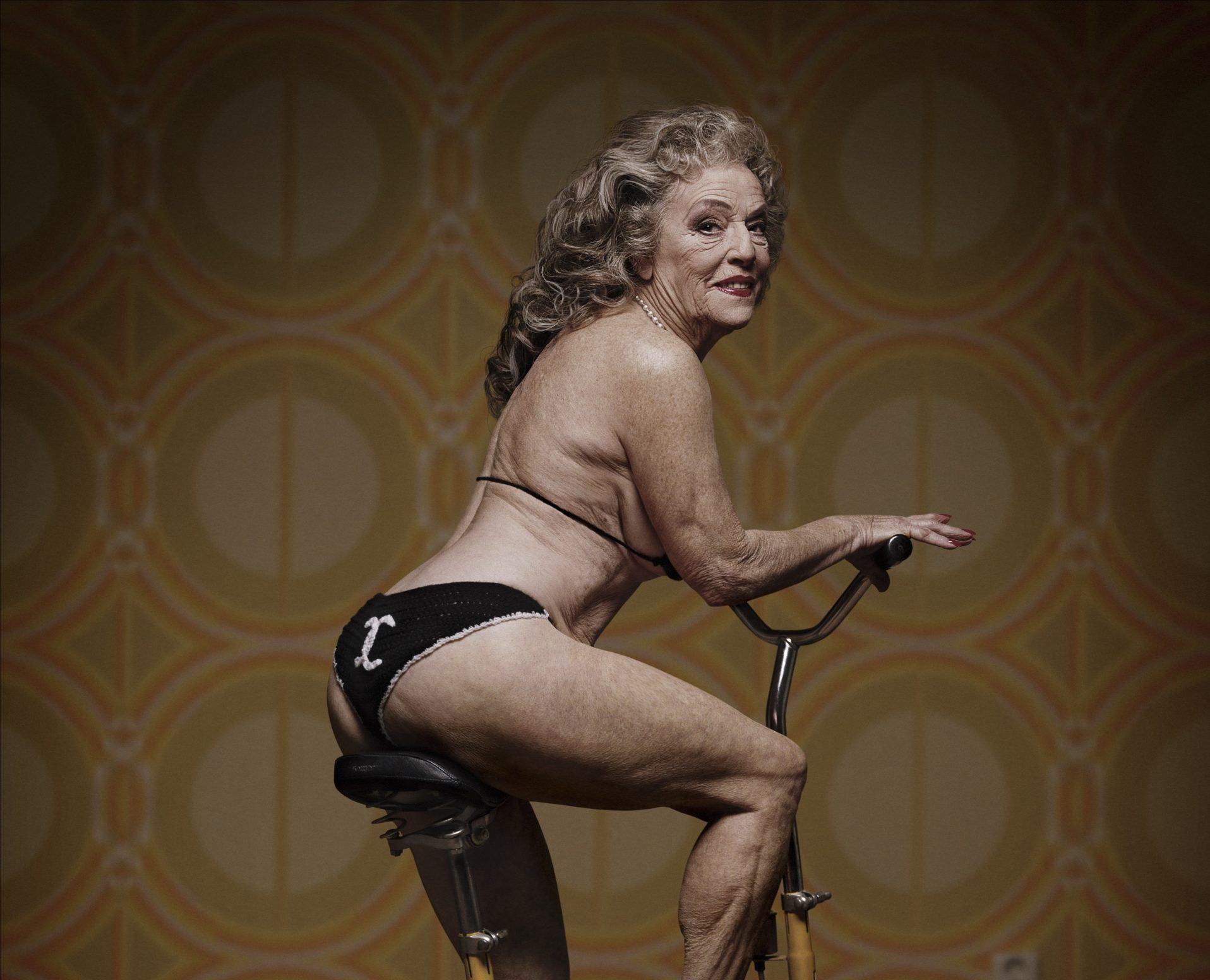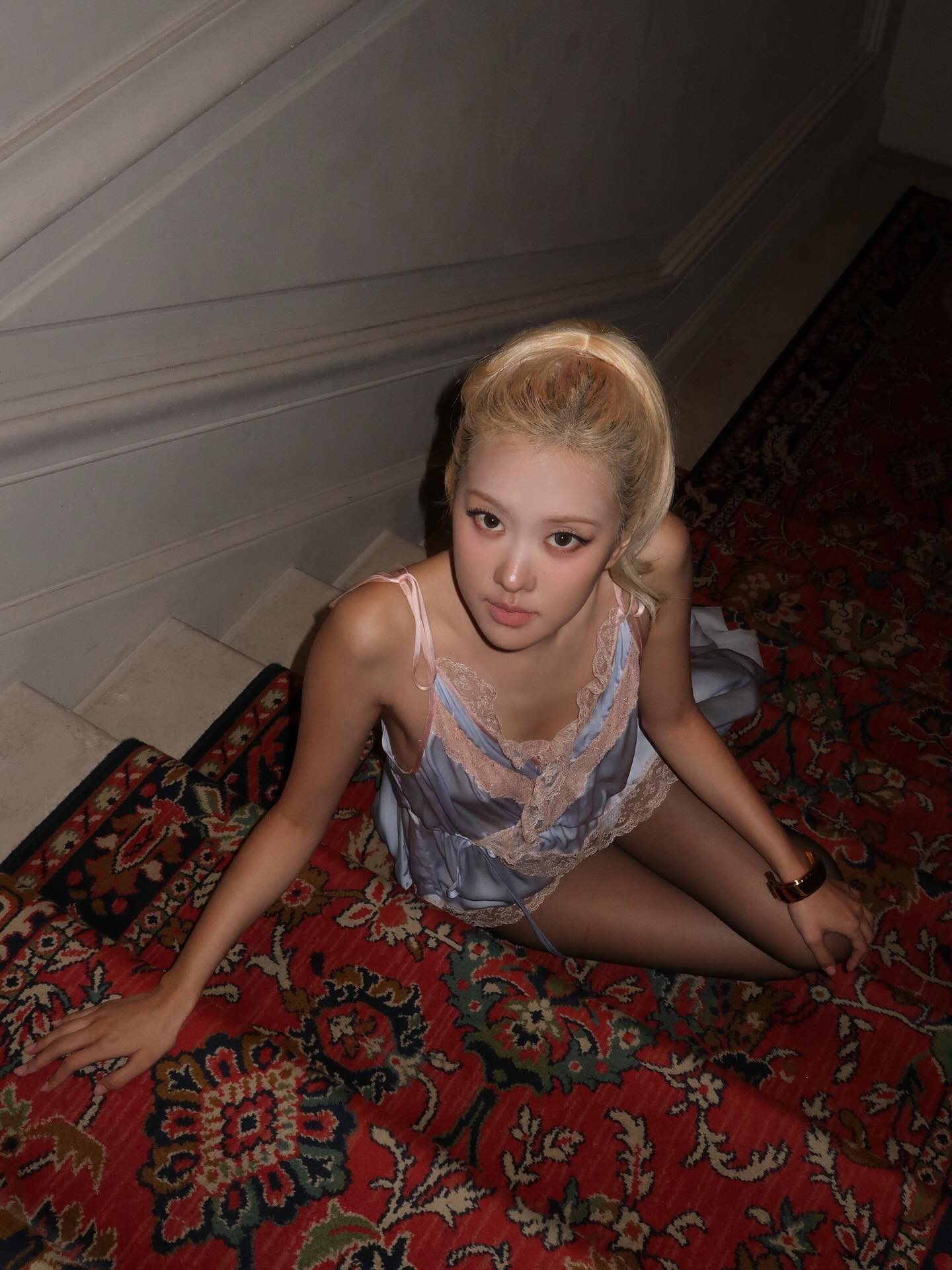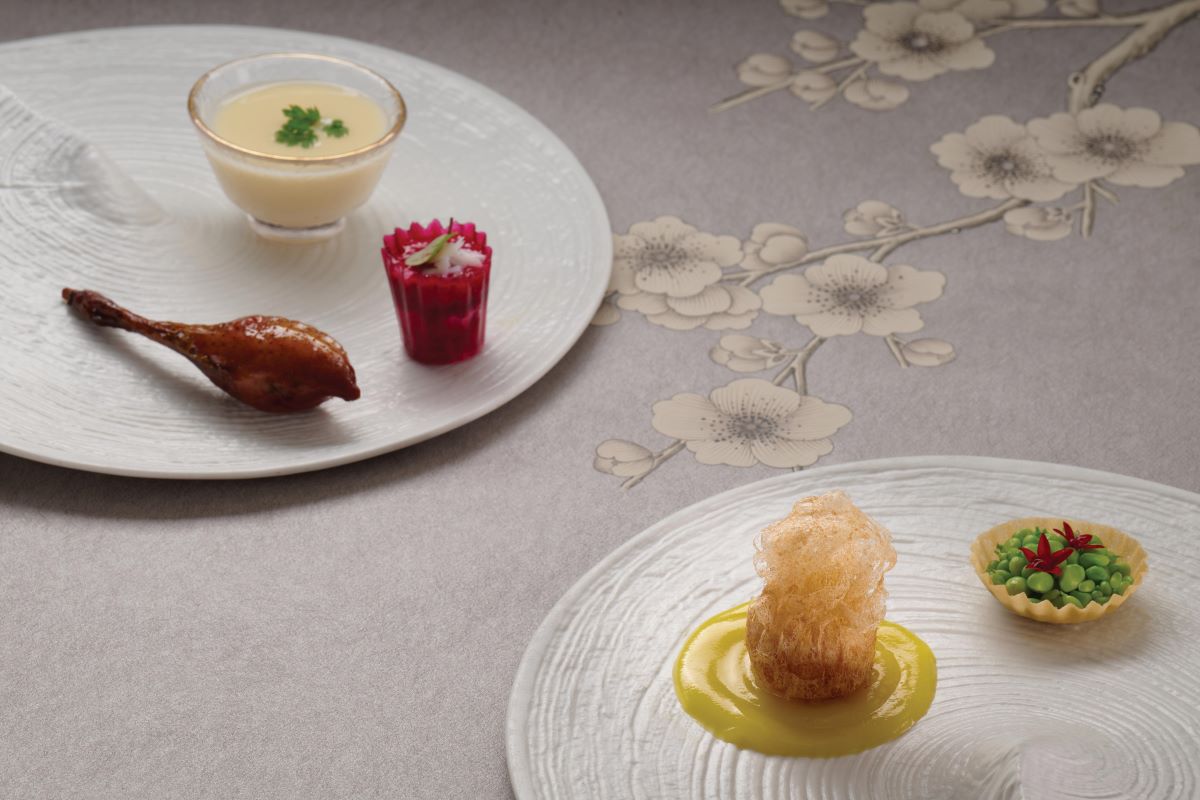David Leung is holding an exhibition of his unique food-based photography works at Gallery by the Harbour from 23 May to 16 June. He tells David Ho about his art and how a vision injury spurred his artistic vision
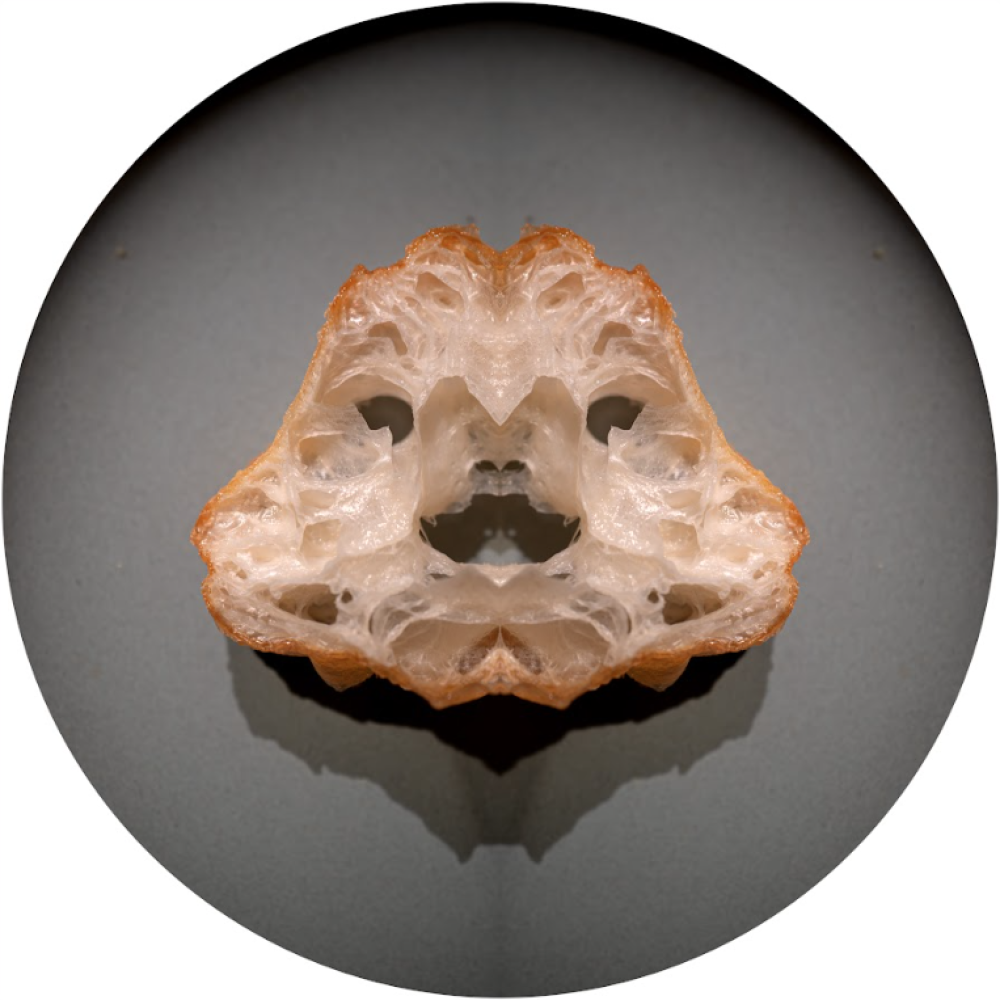
Mama may have told you to not play with your food, but photography artist David Leung is paying no heed to that. If you have ever made out familiar images in random objects, that’s pareidolia, which is the tendency of the mind to interpret faces or patterns where there aren’t any.
Leung has taken pareidolia as the theme of his artistic journey and created symmetrical visuals out of his food and landscape photographs, unveiling the hidden surreal faces in the scene. Five captivating collections of his will be exhibited at Gallery by the Harbour from 23 May to 16 June, serving up a visual feast for all to enjoy.
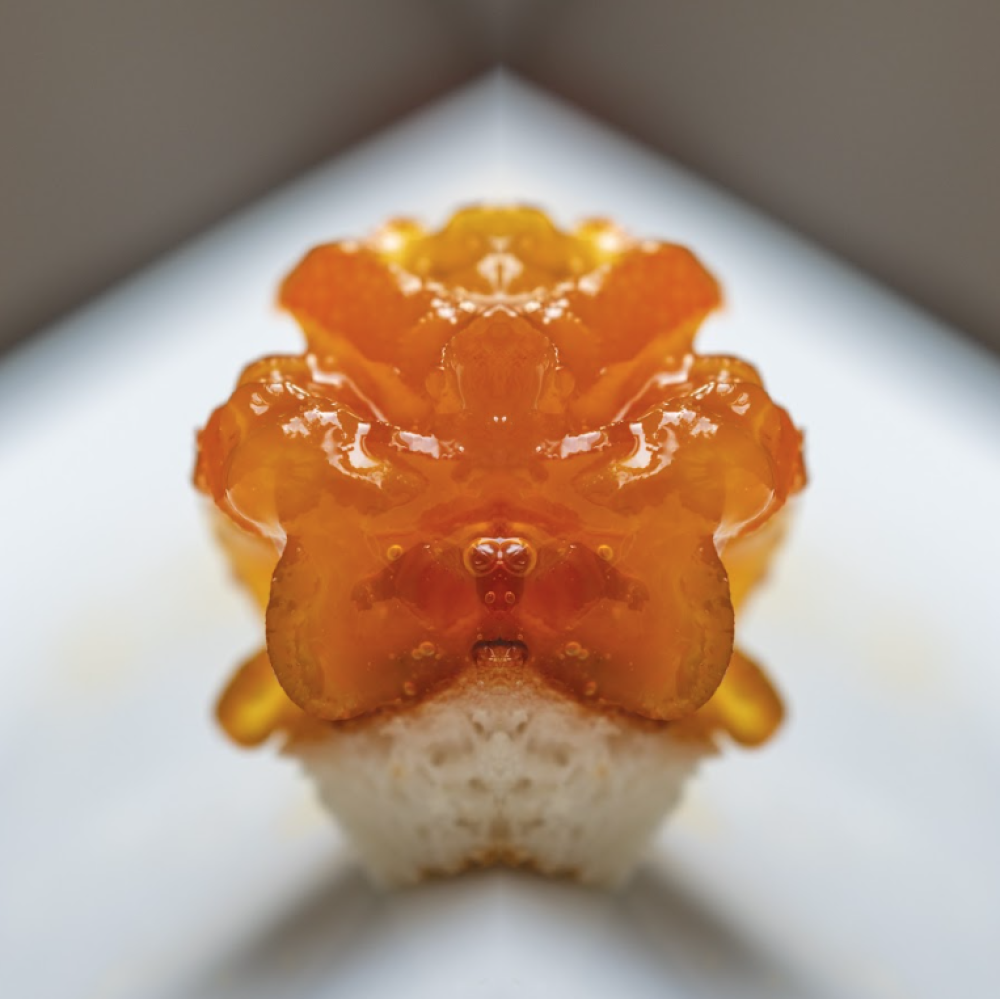
This show comprises five collections of works from you. Looking at them as a whole, what are the common threads and themes you see in your work?
First of all, they are all what I called “Pareidoliart”. The common threads are the re-imagination of my photographs which I call “Symmetrical Pareidolism”. Simply trying to excite one’s visual and mental stimulations on what they can see beyond the original subject matter, kind of like the old Rorschach Test images for imaginative psychological interpretation but in the more “appetising” context – food. And I found it unique to keep this as a consistent visual/brand identity so that audiences and collectors would recognise my style in the long run. As for the multi-collections I am showing this time, they are a demonstration and exploration of collaborations with other artists as well as a new style of physical plating (framing production) for the viewer.
The main body of work are the original Beasts From Feasts series (12 pieces). Other than the image creation itself, I also elevated its presentations by printing them in a circle format and framed on a big round ceramic plate to symbolise its origin of where I shot every one of them – on a dining plate.
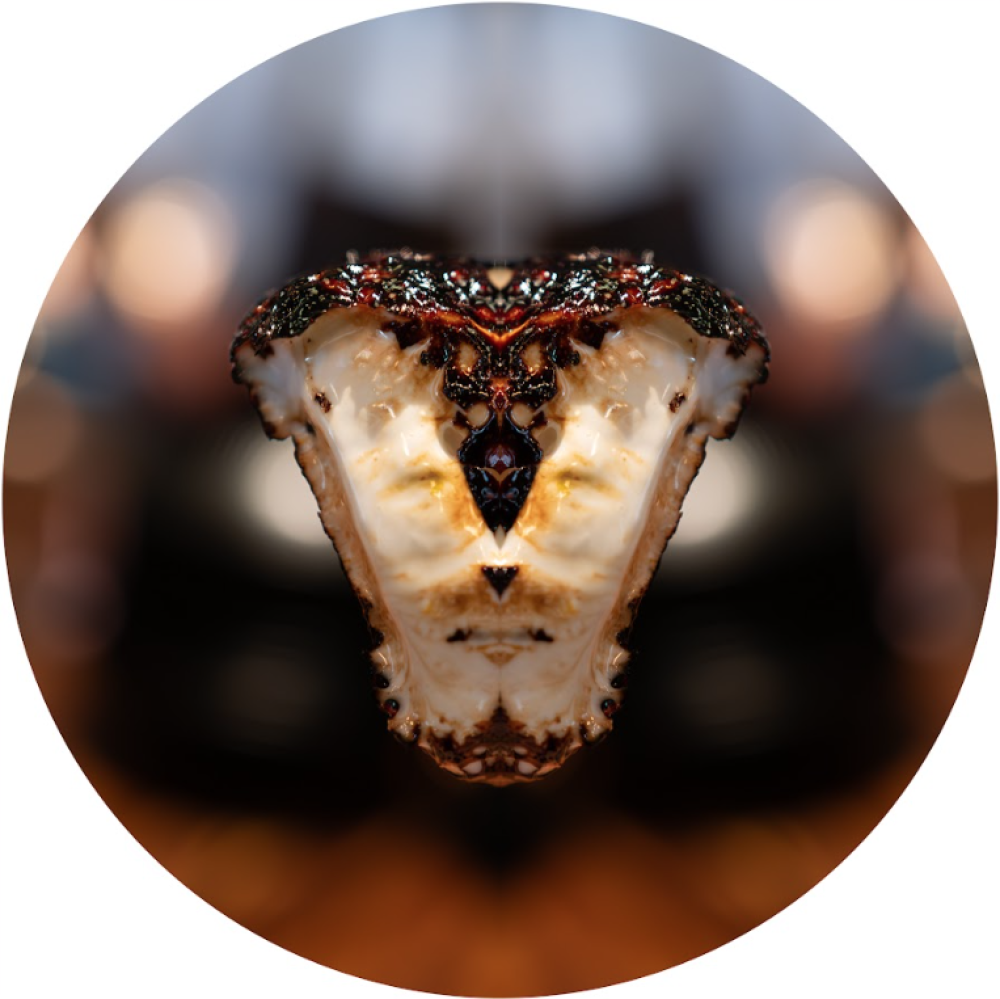
And the other four collections are mostly collaborative explorations in various natures, such as the one piece only production with a famous local Chinese ink painter (Benny Li) with his calligraphy writing on top of my photograph (first time for him to do it this way), and then, a smaller collection collaborating with a jam artisan / food journalist (Wilson Fok) with his home made artisan jams which I challenged myself on shooting the ingredient/condiment itself instead of a plated dish from my dining experiences. The fourth one is a collaboration with Apple iPhone, and is also another exploration in terms of the equipment I use other than the Leica which I have been shooting for all of my previous pieces and exhibitions. All of which you may find its framing have something related to the collaborator’s nature. Best to see them in real life.
Plus, a really small trial on the fifth one to see if it is possible to create my art with another person’s food photographs in conjunction with Harbour City.
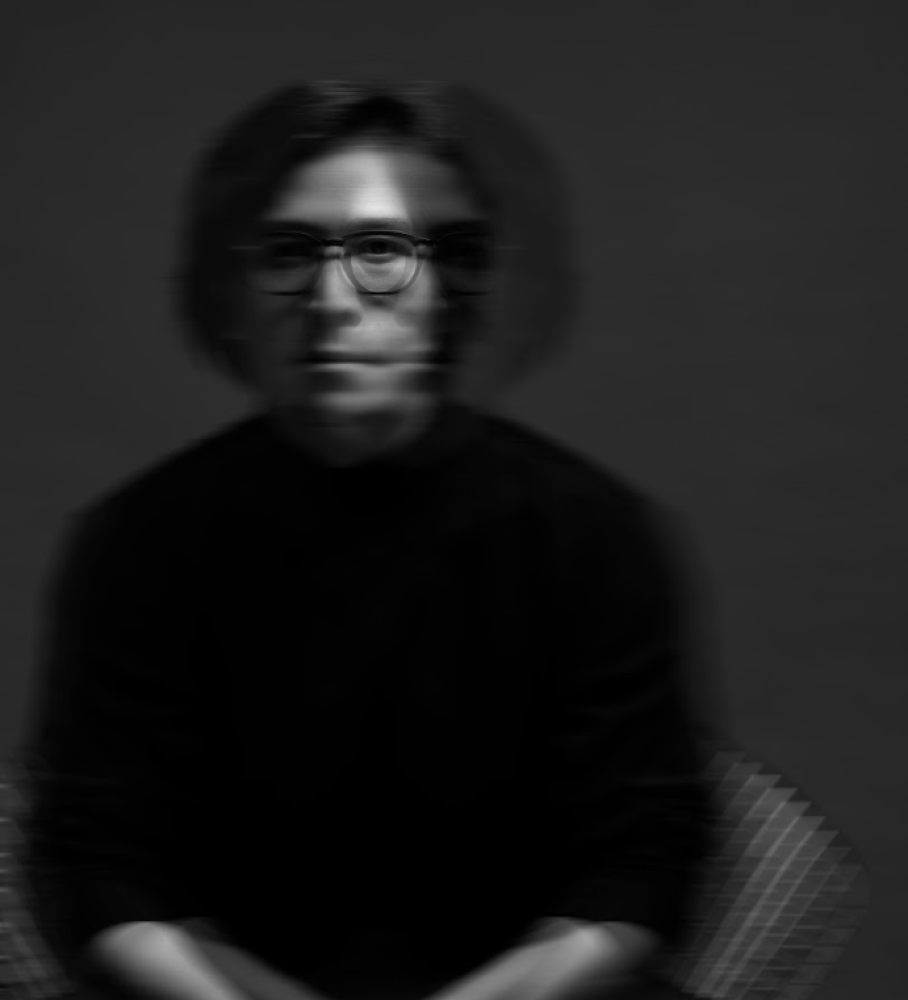
I understand it was a retina injury that gave you a new perspective on your art. Please define for us your new view and how that differs from your previous take on art.
Yes, I really didn’t think about this until last year when it seemed clear that various incidents/decisions in my life made this happen along the way.
As the late Steve Jobs famously said about connecting the dots throughout life stages, I have discovered that my previous and current roles in jobs, hobbies, and incidents have led me to where I am today. Beyond the obvious creative experiences I have accumulated over the past 30 years, there was a significant catalyst that occurred after I experienced the retina injury three years ago, which nearly resulted in the loss of sight in my left eye. Following laser surgery, it took me nine months to recover, during which time I had to contend with blurred and double vision. Ever since that incident, I have noticed a shift in how I perceive images in my mind but I cannot 100% prove this in words and writing.
And given that dining out and capturing food photographs are the most frequent activities in my daily life, these two passions naturally merged into something new with my new ways of seeing. Having always trained my artistic mindset to seek out anomalies in everyday sights, this combination came about naturally. It was only then that I became aware of the term “pareidolia” when I created a series of art pieces centered around it in early 2022 during COVID times when no social distraction was around.
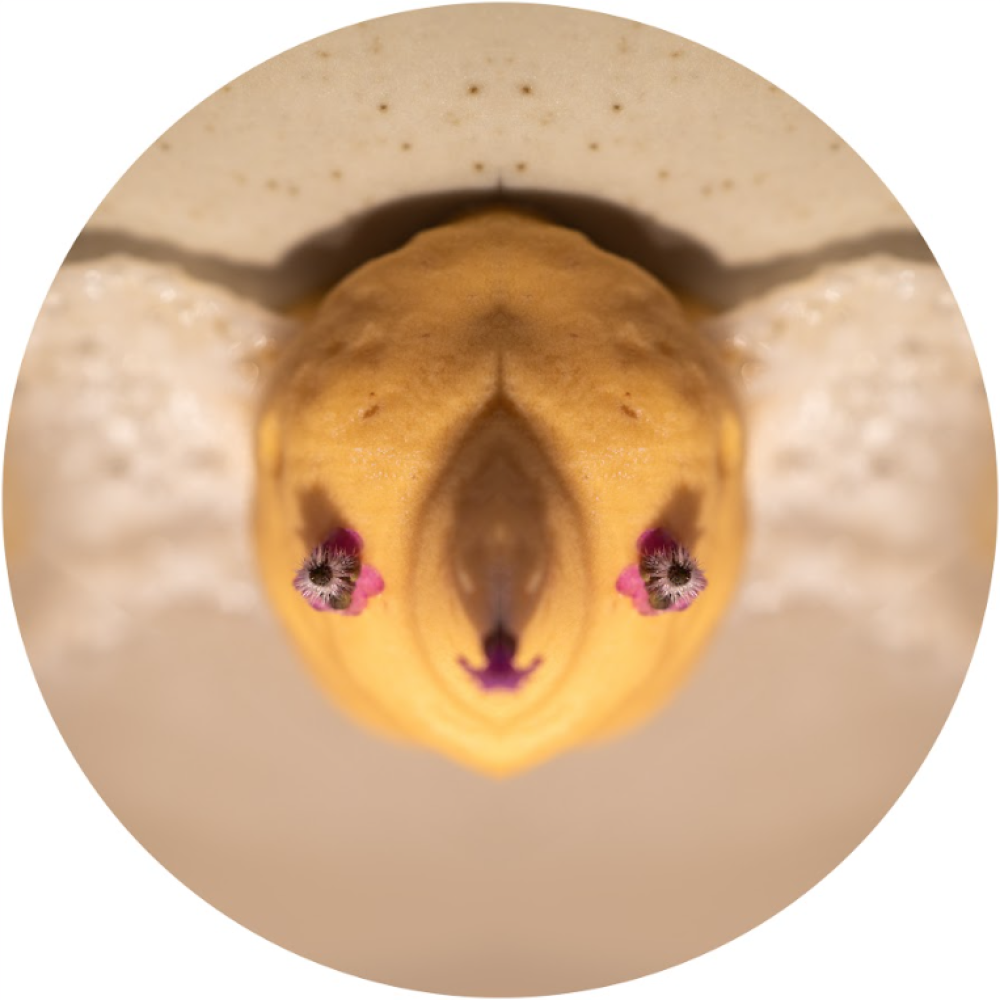
I did some research on past masters in the art world, I discovered that several of them had indeed leveraged this phenomenon, such as the renowned surrealist Salvador Dali. However, their utilization of pareidolia was often planned and purposeful. I have yet to come across any artist or photographer who has applied this concept to food as a subject and created a series out of it. What makes my work particularly unique is that all these images are spontaneous and cannot be planned with any chefs and restaurants. As an artist, I may very well be among the first to combine these two elements in the early stages of exploration.
As for what differs now from my previous take on art, It is clear that I started to see things differently physically as well as seeing things psychologically.
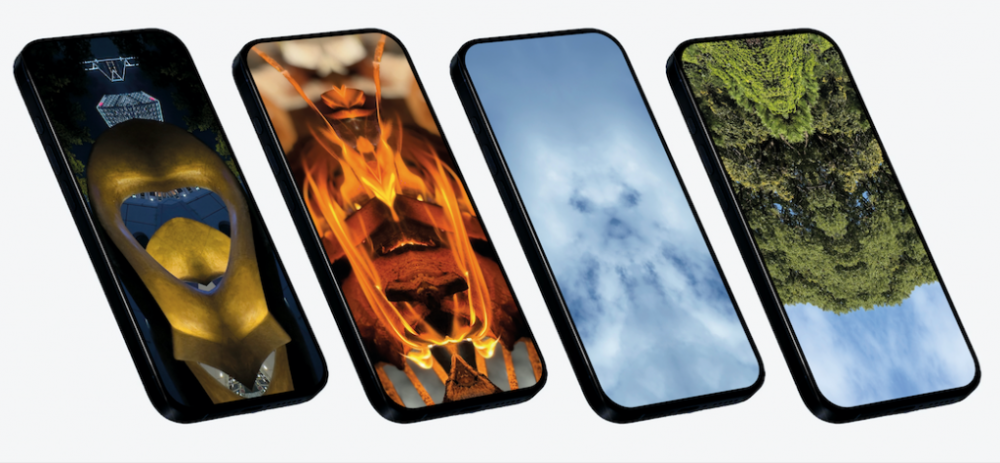
What made you hone in on micro-views and mirrored images in particular?
I think it is in me that I always look for anomalies in life, so besides how I see with a pareidolia mindset, I also find it very fascinating with the micro-view of things especially in my food photography style. It is a totally different view to look at food when you can see it up close in the texture and the form, such as the shiny semi-transparent glaze on top of a piece of meat or the creamy orange lobes of briny-umami delight of a sea urchin. It enhances a lot of its appetizing factor. And utilising these visuals to re-imagine faces is even more amazing as it may become some outer space insect which is never discovered before. Like I am creating new species for the world to see.
Food is your subject of choice in many of your works. How did this become your focus and why?
I believe food is the best medium to connect human beings and start a conversation, it is boundaryless between races, sexes, age and whatever you do for living. And just so happen I have been in this business for the past 17 years. It all came naturally to me. This is the main topic, and like everyone says, we all need to have the enjoyment and satisfaction in order to have the passion to keep creating.
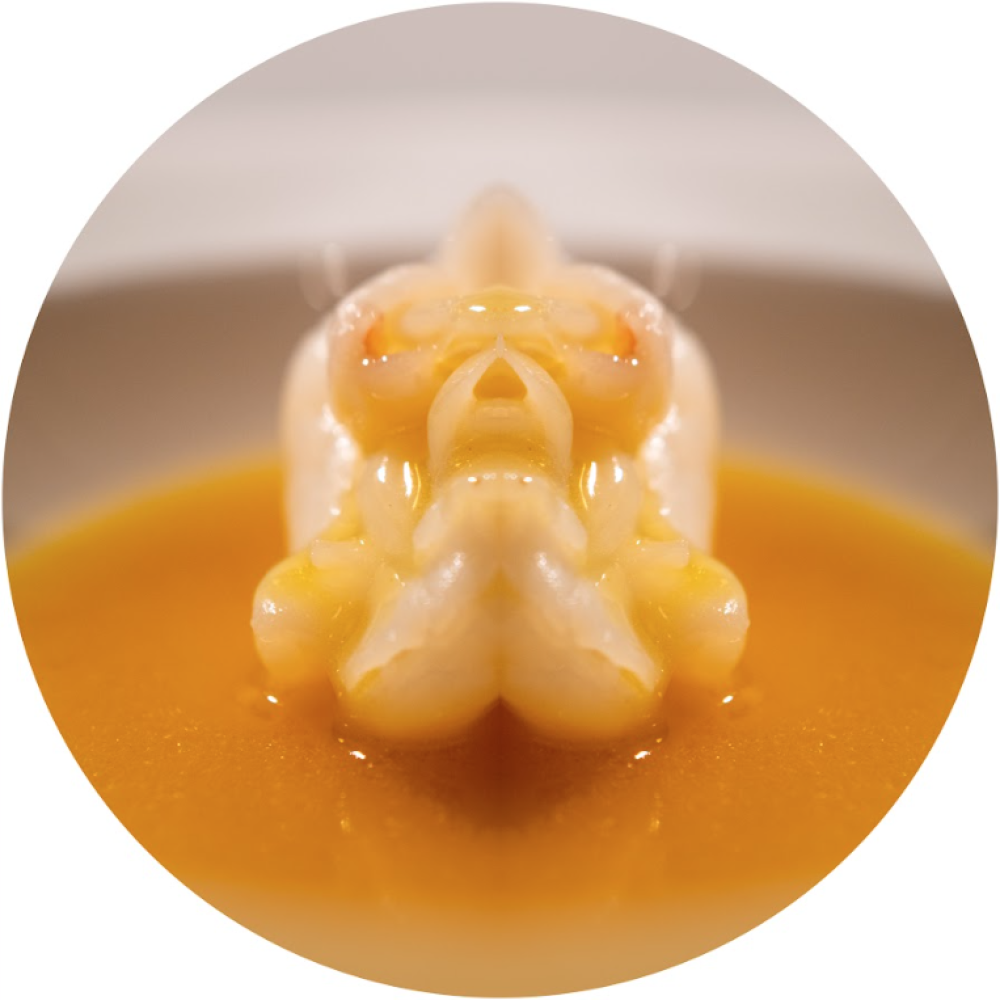
In your art, what is the relationship you want to depict/show between the mind and visual stimuli of our surroundings?
The title of the show See food not see food can really tell what I want the audiences to take away with. I hope I can inspire people to look beyond what they see in daily lives. Nothing is what it seems if we use another angle/mindset to perceive things even though the original object is a simple piece of youtiao (one of the most staple foods in Asian culture). And on the side, I always find satisfaction looking at people staring at my photos and I am interested to know what they see. The answers are always a surprise to me.
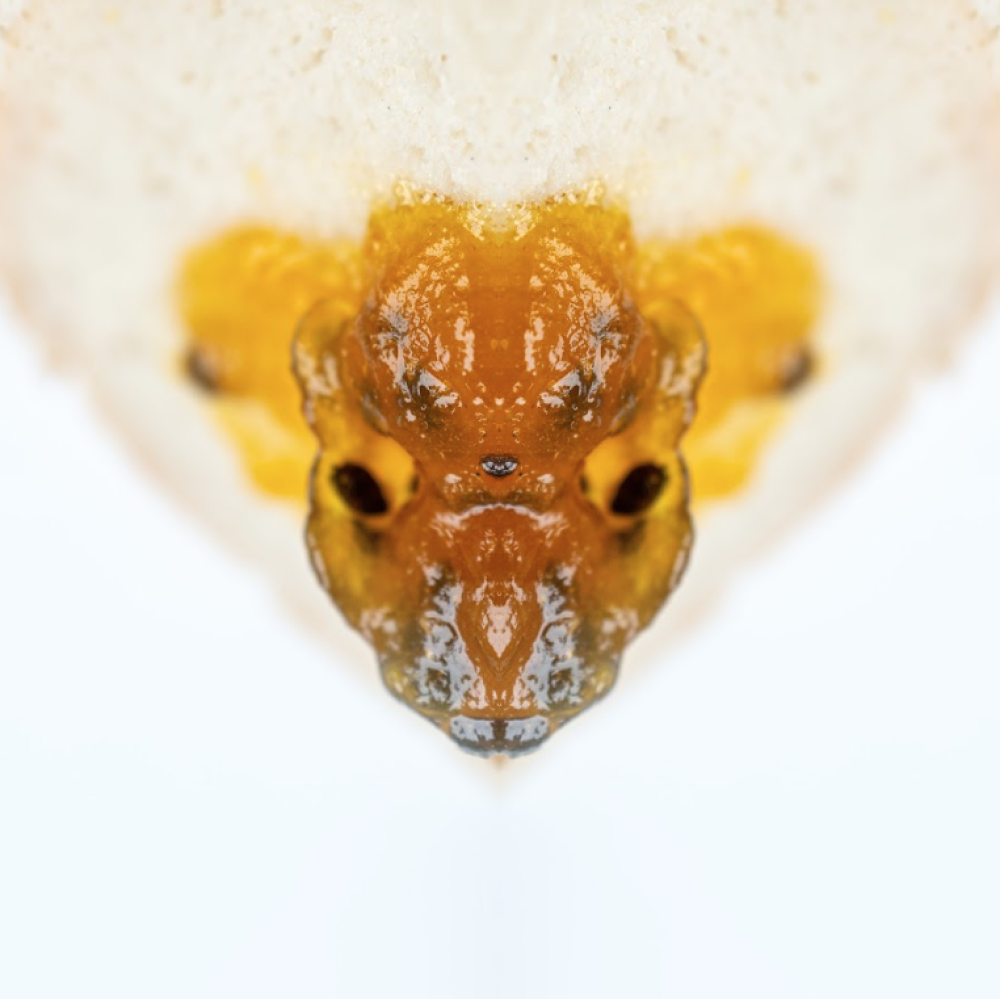
I see a food photography competition is part of this exhibition. What are you looking for in pictures by others?
Harbour City is kind enough to create a food photography competition in order to gather enough “sources” for this show to potentially come up with one or two faces I may see from all these photos. At the end, I found one face out of the 180 entries. As the judge of this competition, I mainly look for the skills of composition, and use of light on the object to deliver an appetising feeling of the food.

What’s next for you?
There’s always a next in what we all do, I do day-dream and manifest things to happen all the time like everyone does. But I think most importantly is always making progress and enjoying the journey in between (Including all the dishes I am tasting to create my art). There’s no definite goal for me as a part-time artist to chase sales or exposures. And I found this the best balance in life to have.
But ultimately, I do want to expand my art internationally, may be creating every culture’s cuisine and make a world series.
Also see: Tomoko Sauvage talks about collaboration, nature, and bubbles



